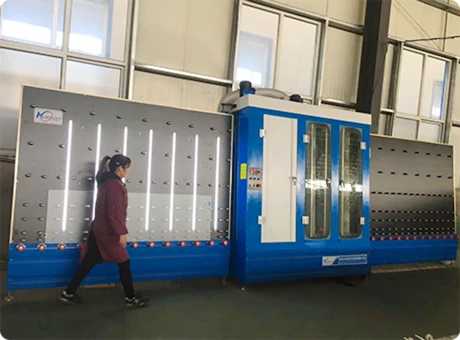Understanding UV Non-Reflective Glass Benefits and Applications
In recent years, the demand for advanced glass technologies has surged, particularly in the fields of architecture, automotive, and visual arts. One remarkable innovation is UV non-reflective glass, which not only enhances aesthetics but also offers practical benefits. This article explores the features, advantages, and various applications of UV non-reflective glass.
What is UV Non-Reflective Glass?
UV non-reflective glass is a specialized type of glass designed to reduce reflections and block harmful ultraviolet (UV) rays. Unlike standard glass, which can create intense glare and may allow UV rays to penetrate, this type of glass incorporates unique coatings or treatments that minimize light reflection and protect against UV radiation. This makes it an ideal choice for applications where clarity and protection are paramount.
Key Features
1. Reduced Glare UV non-reflective glass is engineered to minimize reflections, providing an unobstructed view. This feature is particularly beneficial in high-visibility areas such as galleries and museums, where clarity is crucial for showcasing artwork.
2. UV Protection By blocking a significant percentage of UV rays, this glass helps in preserving colors and materials. In contexts like museums, it prevents fading and deterioration of valuable artifacts, ensuring their longevity.
3. Enhanced Durability Many UV non-reflective glass products are tempered or laminated, adding to their strength and resilience. This durability makes them suitable for various applications, including building facades and vehicle windows.
4. Aesthetic Versatility Available in various thicknesses and tints, UV non-reflective glass can be customized to meet specific design needs. Architects and designers appreciate its versatility, as it can seamlessly fit into diverse styles and environments.
Advantages of UV Non-Reflective Glass
The benefits of utilizing UV non-reflective glass are manifold
- Improved Visibility The reduced glare enhances visibility, making it easier for observers to appreciate the details of artworks or the beauty of outdoor views without distractions from reflections.
uv non reflective glass
- Color Preservation By filtering out UV rays, this glass helps maintain the original colors and textures of sensitive materials, thus extending their lifespan. This is especially important for artworks, textiles, and wood furniture.
- Energy Efficiency UV non-reflective glass can contribute to energy savings. By reflecting a portion of heat while allowing natural light to enter, it helps regulate indoor temperatures, reducing the need for artificial heating or cooling.
- Safety and Security The strength of UV non-reflective glass makes it a safer alternative to traditional glass. In case of shattering, it tends to break into smaller, less dangerous pieces, reducing the risk of injuries.
Applications
The applications of UV non-reflective glass are diverse, spanning multiple industries
1. Art Galleries and Museums To preserve priceless pieces of art, many galleries choose UV non-reflective glass for display cases and windows. It ensures that visitors can appreciate the artworks without the hindrance of glare and protects the pieces from harmful UV rays.
2. Architectural Use In modern architecture, UV non-reflective glass is commonly used for windows and facades. Its ability to enhance transparency without compromising on performance makes it a favored choice among architects aiming for sleek designs.
3. Automotive Industry Car manufacturers utilize this type of glass to improve driver visibility while protecting passengers from harmful UV rays. It enhances the aesthetics of vehicles while providing a layer of safety.
4. Retail and Commercial Spaces Storefronts often opt for UV non-reflective glass to create a welcoming atmosphere. It allows for the vibrant display of merchandise while protecting products from sun damage.
Conclusion
UV non-reflective glass serves as a multifaceted solution to various challenges faced across numerous industries. Its ability to provide clarity, protect from UV radiation, and enhance durability makes it an invaluable material for architects, artists, and consumers alike. As technology continues to evolve, we can expect further advancements in glass solutions that prioritize both form and function. Whether for aesthetic appeal or practical protection, UV non-reflective glass is paving the way for a brighter and safer future.
 Afrikaans
Afrikaans  Albanian
Albanian  Amharic
Amharic  Arabic
Arabic  Armenian
Armenian  Azerbaijani
Azerbaijani  Basque
Basque  Belarusian
Belarusian  Bengali
Bengali  Bosnian
Bosnian  Bulgarian
Bulgarian  Catalan
Catalan  Cebuano
Cebuano  Corsican
Corsican  Croatian
Croatian  Czech
Czech  Danish
Danish  Dutch
Dutch  English
English  Esperanto
Esperanto  Estonian
Estonian  Finnish
Finnish  French
French  Frisian
Frisian  Galician
Galician  Georgian
Georgian  German
German  Greek
Greek  Gujarati
Gujarati  Haitian Creole
Haitian Creole  hausa
hausa  hawaiian
hawaiian  Hebrew
Hebrew  Hindi
Hindi  Miao
Miao  Hungarian
Hungarian  Icelandic
Icelandic  igbo
igbo  Indonesian
Indonesian  irish
irish  Italian
Italian  Japanese
Japanese  Javanese
Javanese  Kannada
Kannada  kazakh
kazakh  Khmer
Khmer  Rwandese
Rwandese  Korean
Korean  Kurdish
Kurdish  Kyrgyz
Kyrgyz  Lao
Lao  Latin
Latin  Latvian
Latvian  Lithuanian
Lithuanian  Luxembourgish
Luxembourgish  Macedonian
Macedonian  Malgashi
Malgashi  Malay
Malay  Malayalam
Malayalam  Maltese
Maltese  Maori
Maori  Marathi
Marathi  Mongolian
Mongolian  Myanmar
Myanmar  Nepali
Nepali  Norwegian
Norwegian  Norwegian
Norwegian  Occitan
Occitan  Pashto
Pashto  Persian
Persian  Polish
Polish  Portuguese
Portuguese  Punjabi
Punjabi  Romanian
Romanian  Russian
Russian  Samoan
Samoan  Scottish Gaelic
Scottish Gaelic  Serbian
Serbian  Sesotho
Sesotho  Shona
Shona  Sindhi
Sindhi  Sinhala
Sinhala  Slovak
Slovak  Slovenian
Slovenian  Somali
Somali  Spanish
Spanish  Sundanese
Sundanese  Swahili
Swahili  Swedish
Swedish  Tagalog
Tagalog  Tajik
Tajik  Tamil
Tamil  Tatar
Tatar  Telugu
Telugu  Thai
Thai  Turkish
Turkish  Turkmen
Turkmen  Ukrainian
Ukrainian  Urdu
Urdu  Uighur
Uighur  Uzbek
Uzbek  Vietnamese
Vietnamese  Welsh
Welsh  Bantu
Bantu  Yiddish
Yiddish  Yoruba
Yoruba  Zulu
Zulu 

